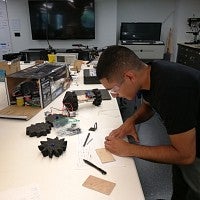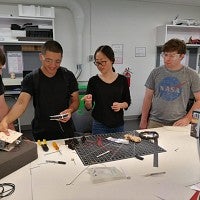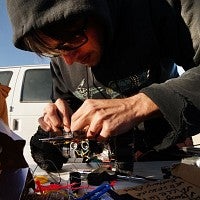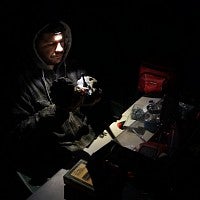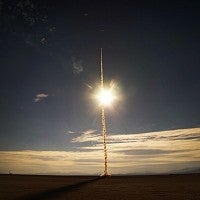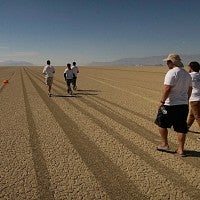Next door to Burning Man, there’s an annual gathering for people who prefer burning rocket fuel.
Every year in September, students from universities throughout the world come to the playa in Nevada’s Black Rock Desert. This ancient, dry lakebed is the largest flat piece of land on Earth, and that makes it the world’s best place to launch rockets.
“Everybody always looks up to the stars,” said Jake Beder, a computer and information science major from Los Angeles whose “dream job and ultimate goal” is to work for an organization like NASA or SpaceX. “Last summer, word got around that people here at the UO were building a robot. When I heard that it was going to be launched from a rocket, I got very interested.”
Since 2015, Dean Walton, the Lorry I. Lokey Science and Technology Outreach Librarian with UO Libraries, has been leading excursions of UO students to compete at ARLISS – A Rocket Launch for International Student Satellites – the annual gathering that brings together college students and high-powered rocketry enthusiasts. The team's travel is supported in part by a Richard and Mary Corrigan Solari Library Fellowship Award from the UO Libraries, and the Department of Computer and Information Science provides further funding and support through its Makers Club.
Walton said ARLISS was established in 1999 as a collaboration between the Stanford University Space Systems Development Program and the AERO-PAC rocket club of Northern California. The goal was to provide students from around the world with hands-on experience in the design, construction and launching of space systems.
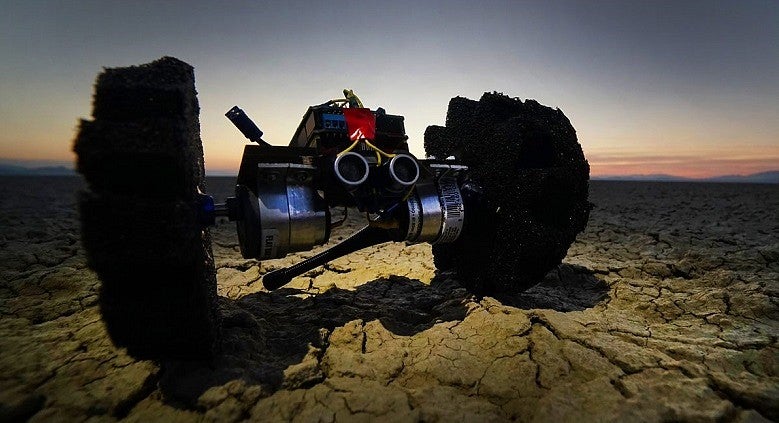
“Their first idea was to have the students create 'CanSats,' a small sensor system that could be launched on a medium-sized rocket in a simulated low-orbit pass,” Walton said. “The first year UO went to Black Rock, we were still building those. Now they’ve advanced to these very small rovers. The competition is to build autonomously navigating rovers that can fit inside the same-sized rockets. That has been a phenomenal challenge that has really engaged our students.”
Miguel Nungaray, a senior from the Southern Oregon town of Malin, assumed leadership of the Makers Club when its founder graduated last spring. It was right at this time that the ARLISS project was ramping up.
“The most challenging part of this project was the engineering part,” he said. “We are all CIS majors, so the coding part was easy to us. The learning experience was in building something we could code. We rebuilt this project three times, completely scrapping the design and starting over.”
Linshu Huang, another member of the Makers Club, demonstrated their robot in the DeArmond MakerSpace in the Price Science Commons & Research Library, where it had been designed and built the previous summer.
“Our rover wasn’t perfect, but it was still alive after the landing,” Huang said.
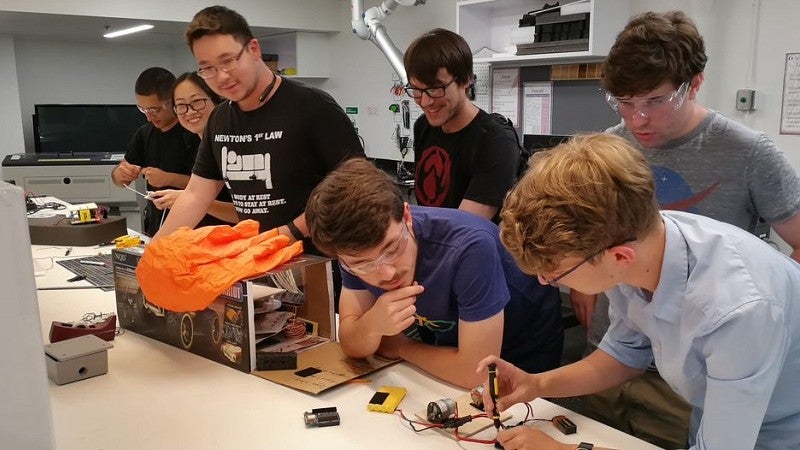
While many of the large engineering schools the UO was competing against designed more advanced robots, a number of them neglected an important element of design: durability. In the competition — when the rovers were packed into 8-foot rockets, launched to 12,000 feet and returned to Earth on a ten-minute parachute drop — it was this strategic consideration that allowed the UO team to outpace many others.
“In our first design the top of the structure had exposure,” Huang recalled. “But then we considered that the robot needs to drop from very high, so our second ‘sandwich’ design was meant to protect all the electronics parts inside two frames.”
A senior from Kunming, Yunnan, China, who wants to work in the field of artificial intelligence, Huang said her motivation for getting involved in the project was a desire to augment her knowledge of coding with hands-on experience building hardware.
“Before doing this project, I had no clue about assembling electronics," she said. "The first set of instructions we downloaded from the web, I said, ‘I have no clue what a single word means.’ But Dean helped the club step-by-step, and through the experience of building this autonomous rover, I realized how the code and the electronics parts cooperate.”
In addition to providing the rover with sufficient padding to survive the launch and landing, the students explained that much of the challenge involved miniaturizing their initial design to a size that would fit inside an ARLISS rocket and pass the qualifying weigh-in. Even after their months of preparation in the maker space in Eugene, team members still were making adjustments to their robot in the late-night hours prior to countdown.
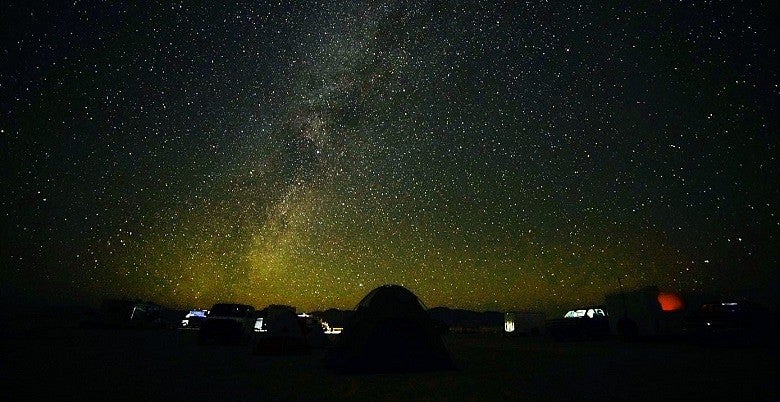
According to Walton, testing their technology creations in a real rocket launch is only part of the value that students take away from their trip to Black Rock. The chance to conduct field work in a remote and spectacular natural area also makes it an adventure.
“Half the students on this last trip had never been camping before, and that is a big part of the experience,” he said. “It is being out in a challenging environment. Where do you find shade? You have to provide your own. How do you keep out of the wind? You can’t.”
The students also noted that the international nature of ARLISS provides great opportunities for them to meet and interact with peer groups from many countries. The competition is mostly good-natured, and teams help one another out by loaning spare equipment and sharing constructive feedback.
“We were camping next to the Costa Rican team and one of the teams from Mexico,” Beder recalled. “We would hang out with them for dinner and share stories about where we were from, what we were doing in school, how things were similar and different. It was cool to make kind of an instant connection.”
Nungaray said his biggest takeaway was gaining valuable experience in project management.
“Software development isn’t just about coding, but managing a team of programmers and bringing a project from start to finish," he said. "My end goal in all this was learning how to work as a team.”

Although Oregon is a relative newcomer at Black Rock, Walton was pleased to report that the Ducks have received positive notice and encouragement that goes to the top of the ARLISS organization. During fall term, the UO Makers Club was visited by Becky Green, director of the ARLISS program, and William Singhose, who has been faculty advisor of the Georgia Tech RescueBot competition team for more than a decade.
“Becky Green led students in a rocket-building session in the DeArmond Makerspace,” Walton noted. “And William Singhose is a Springfield, Oregon, native who spent a couple of his undergraduate years at the UO. On a recent return trip to Eugene, he came and gave a talk for students in the science library’s Visualization Lab.”
Walton believes that the spaces, resources and staff at the Price Science Commons & Research Library make it a natural partner in hands-on, outside-the-classroom learning experiences like those that are fostered in the ARLISS program.
“The library is a common-ground area at the university, and our goal is to supply resources," he said. "In the digital era, the nature of the resources we share is changing. The library becomes a place for people to share learning and experiences. We can foster research and exploration in technical fields that are new to this campus.”

—By Jason Stone, University Communications.
Photos by Dean Walton, UO Libraries.
Video footage courtesy of Linshu Huang.


